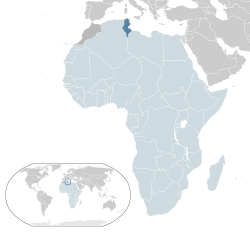Minerals of Tunisia

Tunisia is located on the Mediterranean coast of North Africa. Algeria and Libya are neighbours of Tunisia. The border with Algeria is around 965 km and the border with Libya is 459 km. The area of Tunisia is 163610 sq.km. The land area is 95 percent and the water area is 5 percent. The coast line is 1148 km long. The northern part is hilly and has some peaks. The central part is undulating plateau and the southern part is desert land. The summer is hot and the winter is mild and pleasant. The average annual rain fall is 500 mm. The northern part gets rain fall but the southern part is dry and get limited rain. The important river is called Medjerda River. It has a length of 450 km.
Tunisia is rich in mineral and oil resources. The geological survey and the exploration of minerals, oil and natural gas were carried out during the first part of twentieth century. The minerals like gypsum, barite, limestone, rock salt, rock phosphates, and clay are found in Tunisia. Metallic minerals of silver, lead, zinc, bauxite and iron ore are also found in Tunisia. Crude oil and natural gas are also found here. The oil reserves are estimated at 430 million barrels. The natural gas reserves are estimated as 65 billion cubic meters. Tunisia exports minerals and mineral products to countries like France, Italy, Spain, Germany, Algeria, Libya and Egypt. A number of mineral based industries are established in Tunisia. These are steel, fertilizer, cement, power plants, refineries and aluminium fluoride. Smelters of lead, zinc and silver are also there and contributed to the production of metals. Minerals, crude oil and natural gas contributed significantly to the national economy of Tunisia.
Mineral exploration and mining is guided by the Mining Code 2003 of Tunisia. The National Office of Mines is the apex body for the management of mineral resources. It deals with geological survey, mapping, exploration and licensing of mines. Crude oil and natural gas exploration and production are governed by the Hydrocarbon Code of 1999 and supplementary code of 2002. The code allows one year for prospecting, 5 years for explorations and 30 years for production. Tunisia needs to take steps for the development of infrastructure, power generation, port expansion and processing of minerals. The minerals and oil may be able to contribute more to the national income.